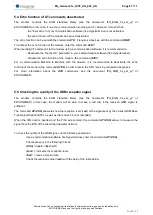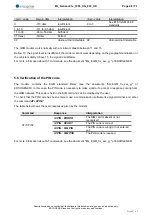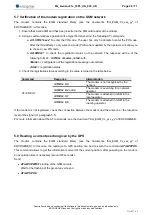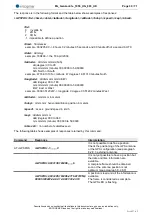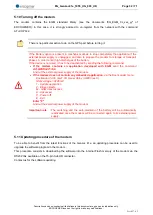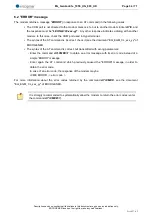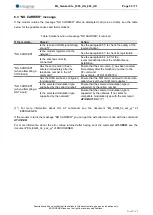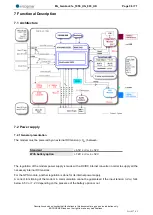
EG_GenLoc41e_1055_UG_003_UK
Page 27 / 71
Descriptions and non-contractual illustrations in this document are given as an indication only.
ERCOGENER reserves the right to make any modifications.
Dct_427_02
5.4 Echo function of AT commands deactivated
The modem contains the EGM standard library (see the documents "EG_EGM_CL_xxx_yy" of
ERCOGENER) in this case, if no echo is returned when entering an AT command, it means that:
- the "local echo " of your communication software (like Hyperterminal) is not activated,
- the echo function of the modem has been deactivated.
The echo function can be set with the command
ATE
; it requires a back-up with the command
AT&W
.
To activate the echo function of the modem, enter the command
ATE1
.
When sending AT commands to the modem using a communication software, it is recommended to:
- Deactivate the "local echo" parameter in your communication software (like Hyperterminal),
- Activate the echo function of the modem (the command
ATE1
).
For a communication Machine to Machine with the modem, it is recommended to deactivate the echo
function of the modem (the command
ATE0
) in order to avoid the CPU receiving redundant responses.
For more information about the
ATE
commands, see the document "EG_EGM_CL_xxx_yy" of
ERCOGENER.
5.5 Checking the quality of the GSM reception signal
The modem contains the EGM standard library (see the documents "EG_EGM_CL_xxx_yy" of
ERCOGENER) in this case, the modem will be able to make a call only if the received GSM signal is
sufficient.
The command
AT+CSQ
allows to know the reception level (
rssi
) of the signal sent by the closest GSM Base
Transceiver Station (BTS), as well as the receive bit error rate (
ber
).
When the SIM card is inserted and the PIN code entered, the command
AT+CSQ
allows to measure the
signal from the BTS of the subscribed operator network.
To check the quality of the GSM signal, do the following operations:
Use a communication software like Hyperterminal, enter the command
AT+CSQ
.
The response is in the following format:
+CSQ : <rssi>, <ber>
with:
<rssi>
= indicates the reception level,
<ber>
= receive bit error rate.
Check the returned value
<rssi>
with the help of the table below.















